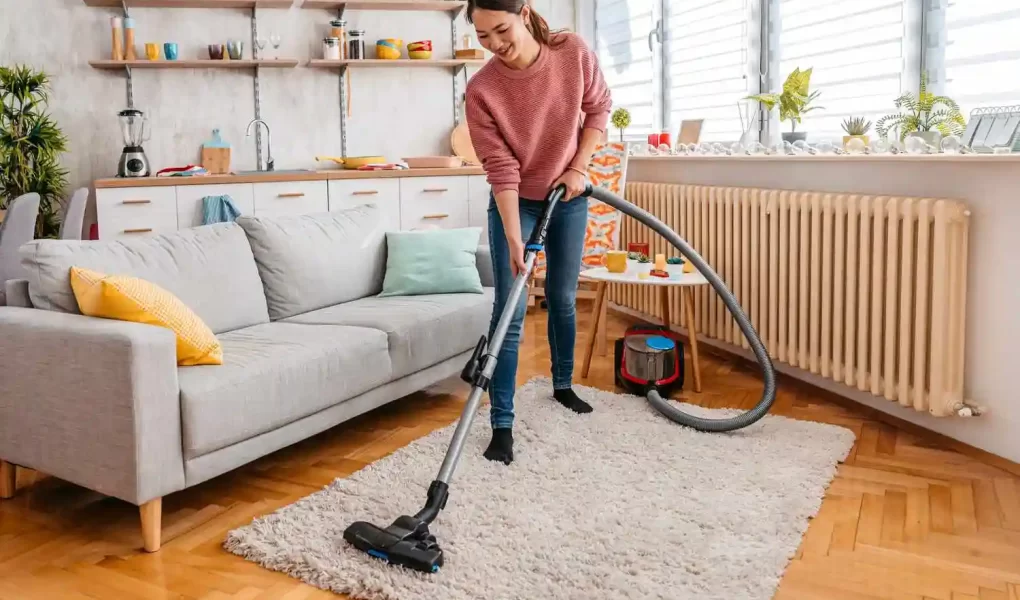When it comes to cleaning your rug, the key is to understand the specific needs of your rug type. If you have a delicate silk rug or a durable synthetic one, taking the time to properly clean and maintain it will ensure its longevity and beauty for years to come. By considering factors such as material, construction, and level of soiling, you can choose between chemical cleaners and natural alternatives that best suit your rug.
Regular maintenance is crucial in preserving the quality of your rug. Vacuuming weekly, dealing with spills immediately, and opting for professional cleaning services when needed are all part of ensuring your rug remains in top condition.
The importance of regular rug maintenance

Regular rug maintenance is essential for preserving the appearance and lifespan of your beloved rugs. Dust, dirt, and debris can accumulate, causing discolouration and wear. Establishing a routine cleaning schedule can prevent these particles from embedding deep into the fibres.
For aesthetic reasons, regular maintenance also contributes to a healthier indoor environment. Rugs can harbour allergens, bacteria, and mould if not properly cleaned. By vacuuming regularly and addressing spills promptly, you can create a cleaner living space for you and your family.
Maintaining your rug helps protect your investment. High-quality rugs are an investment worth safeguarding through proper care. Regular cleaning and upkeep allow you to enjoy your rug’s beauty for years without worrying about premature deterioration or damage.
Cleaning different types of rugs
When it comes to cleaning rugs, understanding the different types is key.
Wool rugs are durable but need gentle care to avoid damage.
Silk rugs are luxurious, require delicate handling, and should not be cleaned with harsh chemicals.
Cotton rugs are easy to clean but may shrink if not washed properly.
Synthetic rugs like nylon or polyester can withstand more rigorous cleaning methods.
Natural fibre rugs like jute or sisal need special attention to prevent unravelling.
Each rug type has unique characteristics that influence how they should be cleaned.
Regular vacuuming and spot cleaning can help maintain your rug’s appearance and prolong its lifespan.
Chemical cleaners vs. natural alternatives

You may wonder whether to opt for chemical cleaners or natural alternatives when cleaning your rug. Chemical cleaners can be effective in removing tough stains and odours quickly. However, they may contain harsh ingredients that could damage the fibres of your carpet over time.
On the other hand, natural alternatives like vinegar, baking soda, or even lemon juice are gentle on your rug and the environment. They can also help eliminate bacteria and odours without leaving toxic residue behind.
It’s essential to consider the material of your rug before deciding which option is best. Natural fibres like wool may require a more delicate approach than synthetic materials.
Step-by-step guide to cleaning a rug
Cleaning a rug may seem daunting, but it can be quite manageable with the right approach. Remove all loose dirt and debris from your rug by vacuuming thoroughly. Make sure to use an attachment suitable for rugs to avoid damaging the fibres.
Next, mix a solution of mild detergent with water in a bucket. If you want to ensure that this solution does not damage your rug, test it on a small, inconspicuous area first. Gently scrub the stained areas with a soft brush or sponge using the detergent solution.
After cleaning:
- Rinse the rug thoroughly with clean water to remove any soapy residue.
- Avoid soaking the carpet, as excessive moisture can lead to mould and mildew growth.
- Allow the rug to air dry completely before returning it to its original location.
Common mistakes to avoid when cleaning a rug
When it comes to cleaning your rug, there are a few common mistakes that you should avoid to keep it looking its best. One of the biggest mistakes people make is using too much water when cleaning their rugs. Excessive moisture can lead to mould and mildew growth, causing more harm than good.
Another mistake to avoid is using harsh chemicals on your rug without knowing its material composition. Chemical cleaners may cause discolouration or damage to certain types of rugs. Always check the label for cleaning instructions or do a patch test in an inconspicuous area before applying any cleaner.
Many people make the mistake of not properly drying their rugs after cleaning them. Make sure to air dry or use a fan to speed up the process and prevent moisture from getting trapped in the fibres.
Neglecting regular maintenance like vacuuming can accumulate dirt and debris over time, making it harder to clean later on. Regular upkeep will ensure your rug stays fresh and clean for longer periods.
Professional rug cleaning services: pros and cons
Professional rug cleaning services offer the convenience of having experts handle your task. They are equipped with specialized tools and knowledge to effectively clean various rugs. Hiring professionals can ensure a thorough and deep cleaning that may not be achievable through DIY methods alone.
On the downside, professional rug cleaning services can be costly, especially if multiple or large area rugs need cleaning. Scheduling an appointment and waiting for the service to be completed may not always align with your immediate needs or timeline.
Some people prefer using natural alternatives to chemical cleaners due to concerns about harsh ingredients affecting their health or the environment. Professional cleaners typically use industry-approved products that are safe for your family and rugs.
Choosing professional rug cleaning services depends on budget, time constraints, and personal preferences.




